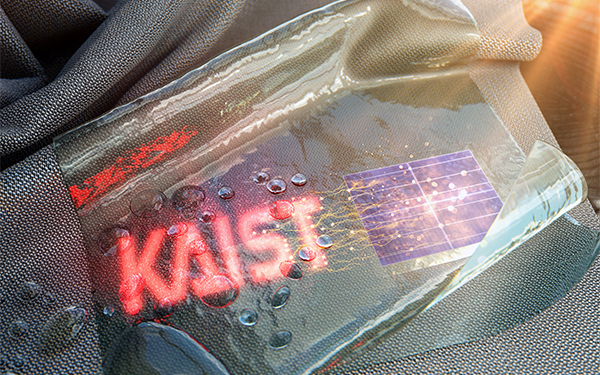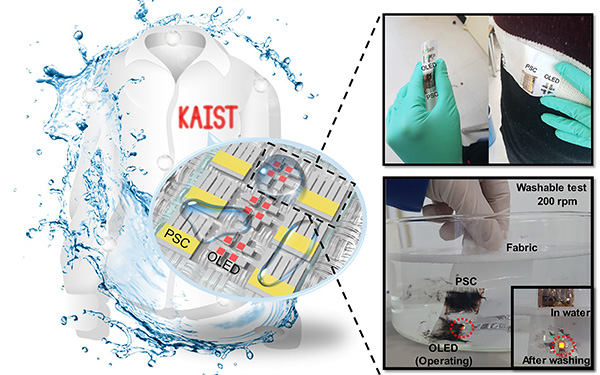Wearable devices have become common electronics in the modern society and they have been integrated with various smart applications to enhance life convenience. Apart from wearable accessories like glasses and watches, scientists are working on developing smart clothing to create even more diverse applications.
The Korea Advanced Institute of Science and Technology (KAIST) announced its new achievement in developing a textile-based display module that is washable, wearable and self-powered.

(Image: KAIST)
Professor Kyung Cheol Choi from the School of Electrical Engineering at KAIST and his team fabricated their wearing display modules on real textiles that integrated polymer solar cells (PSCs) with OLEDs. PSCs provide stable power without an external power source and have been one of the most promising candidates for a next-generation power source, especially for wearable and optoelectronic applications. Meanwhile, OLEDs can be driven with milliwatts.
PSC and OLED are both vulnerable to external moisture and oxygen and encapsulation barrier is therefore essential to ensure their reliabilities. However, the conventional encapsulation barrier does not work in aqueous environment which limits the applications of wearing displays on clothing as operation on rainy days or after washing is a must.
To tackle this issue, the team employed a washable encapsulation barrier that can protect the device without losing its characteristics after washing through atomic layer deposition (ALD) and spin coating. With this encapsulation technology, the team confirmed that textile-based wearing display modules including PSCs, OLEDs, and the proposed encapsulation barrier exhibited little change in characteristics even after 20 washings with 10-minute cycles. Moreover, the encapsulated device operated stably with a low curvature radius of 3mm and boasted high reliability.

(Image: KAIST)
KAIST said the textile-based washable display module would push the commercialization of wearing electronic devices as it showed no deterioration in properties over 30 days even after being subjected to both bending stress and washing. Moreover, this wearable electronic device with self-powered system could save energy.
This research, in collaboration with Professor Seok Ho Cho from Chonnam National University and led by Eun Gyo Jeong, was published in Energy and Environmental Science on January 18, 2019.













